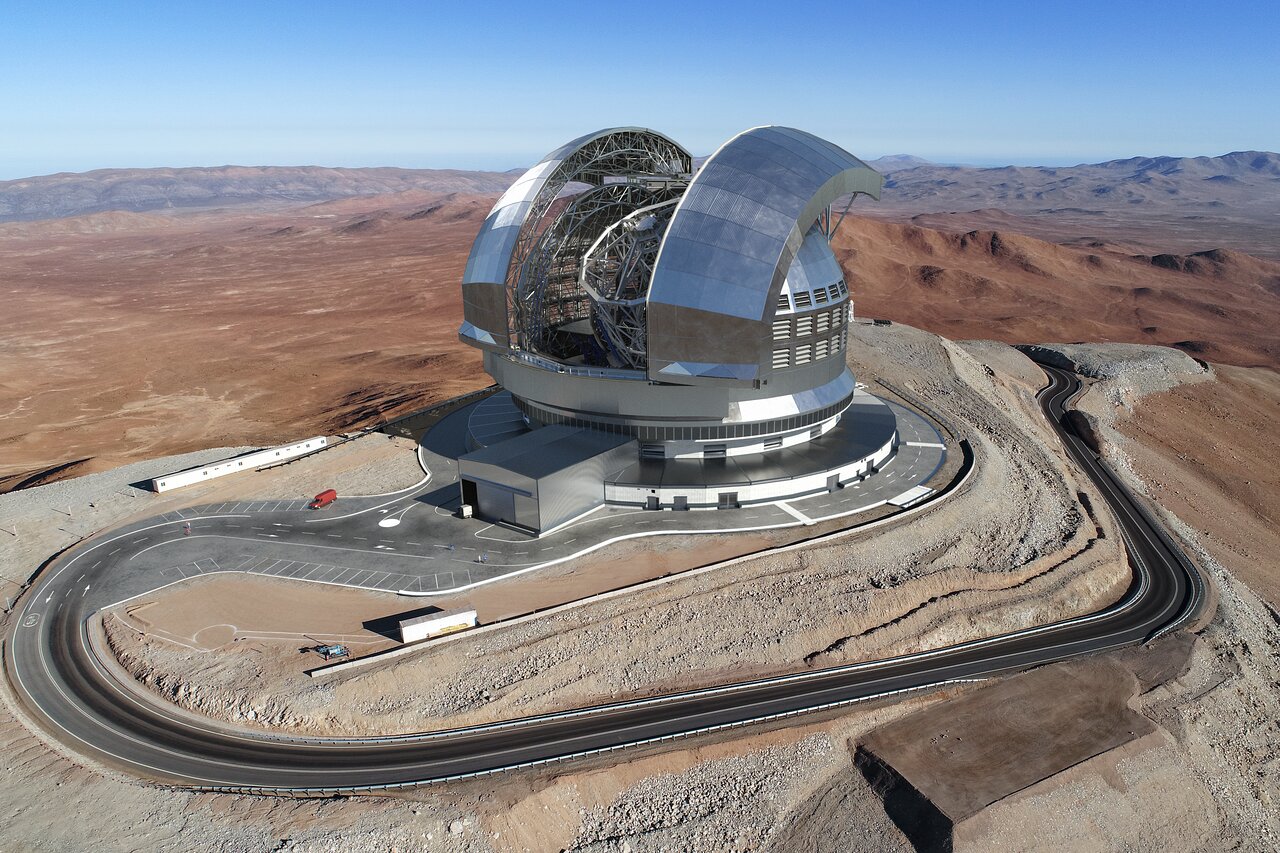ESO has signed an agreement with an international consortium of institutions for the design and construction of ANDES. The Thuringian State Observatory is part of the international consortium. ANDES stands for "ArmazoNes high Dispersion Echelle Spectrograph".
ANDES is a powerful spectrograph that will be installed on ESO's Extremely Large Telescope (ELT). A spectrograph splits light into its component wavelengths. Astronomers use it to determine important properties about astronomical objects, such as their chemical compositions. The instrument will have a record-high wavelength precision in the visible and near-infrared regions of light. When working in combination with the powerful mirror system of the ELT, it will pave the way for research spanning multiple areas of astronomy.
Researchers will use the instrument to search for signs of life on extrasolar planets and to identify the very first stars in the universe. In addition, astronomers will be able to use ANDES data to test whether the fundamental constants of physics vary with time and space. Its comprehensive data will also be used to directly measure the acceleration of the Universe’s expansion, one of the most pressing mysteries about the cosmos.
The agreement was signed by ESO’s Director General, Xavier Barcons, and by Roberto Ragazzoni, the President of Italy’s National Institute for Astrophysics (INAF), the institution leading the ANDES consortium. The international consortium is made up of numerous research institutes in 13 countries. In addition to the Thuringian State Observatory, the German members of the consortium include the Leibniz-Institut für Astrophysik Potsdam (AIP), the Institut für Astrophysik und Geophysik, Georg-August-Universität Göttingen (IAG), the Atmospheric Physics of Exoplanets Department, Max-Planck-Institut für Astronomie Heidelberg (MPIA), the Zentrum für Astronomie, Universität Heidelberg (ZAH), and the Hamburger Sternwarte, Universität Hamburg (UHH).
"ANDES enables cutting-edge research in astronomy. I am delighted that the Thuringian State Observatory is part of the international consortium. This opens the door for us to continue making our contribution to important astronomical discoveries in the future", says Professor Dr. Markus Roth, Director Thuringian State Observatory.
 This is how the ELT will look like. Credit: ESOESO’s ELT is currently under construction in the Atacama Desert of Northern Chile. Its main mirror will have a diameter of 39 meters and consist of 798 hexagonal segments. The ELT is scheduled to go into operation by 2030. It will be the largest optical telescope in the world and will usher in a new era of ground-based astronomy.
This is how the ELT will look like. Credit: ESOESO’s ELT is currently under construction in the Atacama Desert of Northern Chile. Its main mirror will have a diameter of 39 meters and consist of 798 hexagonal segments. The ELT is scheduled to go into operation by 2030. It will be the largest optical telescope in the world and will usher in a new era of ground-based astronomy.
The ANDES project is developed by an international consortium composed of research institutes in 13 countries. They are:
- Brazil: Board of Stellar Observational Astronomy, Universidade Federal do Rio Grande do Norte, Observatório Nacional
- Canada: Observatoire du Mont-Mégantic and the Trottier Institute for Research on Exoplanets, Université de Montréal
- Denmark: Instrument Centre for Danish Astrophysics on behalf of Niels Bohr Institute, Aarhus University, Danmarks Tekniske Universitet
- France: Centre National de la Recherche Scientifique (CNRS) on behalf of Observatoire de la Côte d’Azur, Université Côte d’Azur (LAGRANGE), Laboratoire d’Astrophysique de Marseille, Aix-Marseille Université, Centre National d’Etudes Spatiales (LAM), Institut de Recherche en Astrophysique et Planetologie, Université Toulouse III-Paul Sabatier (IRAP), Institut de Planétologie et d’Astrophysique de Grenoble, Université Grenoble-Alpes (IPAG), Laboratoire Univers et Particules de Montpellier, Université de Montpellier (LUPM), Institut d’Astrophysique de Paris, Sorbonne Université (IAP), Laboratoire de Météorologie Dynamique, Ecole Normale Supérieure, Ecole Polytechnique, Sorbonne Université (LMD)
- Germany: Leibniz-Institut für Astrophysik Potsdam (AIP), Institut für Astrophysik und Geophysik, Georg-August-Universität Göttingen (IAG), Atmospheric Physics of Exoplanets Department, Max-Planck-Institut für Astronomie Heidelberg (MPIA), Zentrum für Astronomie, Universität Heidelberg (ZAH), Thüringer Landessternwarte Tautenburg (TLS), Hamburger Sternwarte, Universität Hamburg (UHH)
- Italy: INAF, Istituto Nazionale di Astrofisica (Lead Technical Institute)
- Poland: Nicolaus Copernicus University in Torun
- Portugal: Instituto de Astrofísica e Ciências do Espaço (IA) at Centro de Investigaço em Astronomia/Astrofísica da Universidade do Porto (CAUP), Instituto de Astrofísica e Ciências do Espaço at Faculdade de Ciências da Universidade de Lisboa, Associação para a Investigação e Desenvolvimento de Ciências (FCiências.ID)
- Spain: Instituto de Astrofísica de Canarias (IAC); Consejo Superior de Investigaciones Científicas (CSIC, Spain) on behalf of Instituto de Astrofísica de Andalucía (IAA), Centro de Astrobiología de Madrid (CSIC-INTA)
- Sweden: Lund University, Stockholm University, Uppsala University
- Switzerland: Département d’Astronomie, Université de Genève; Weltraumforschung und Planetologie, Physikalisches Institut, Universität Bern
- United Kingdom: Science and Technology Facilities Council, United Kingdom Research and Innovation on behalf of Cavendish Laboratory & Institute of Astronomy, University of Cambridge; UK Astronomy Technology Centre; Institute of Photonics and Quantum Sciences, Heriot-Watt University
- USA: Department of Astronomy, University of Michigan
Learn more about ANDES on ESO's website.

